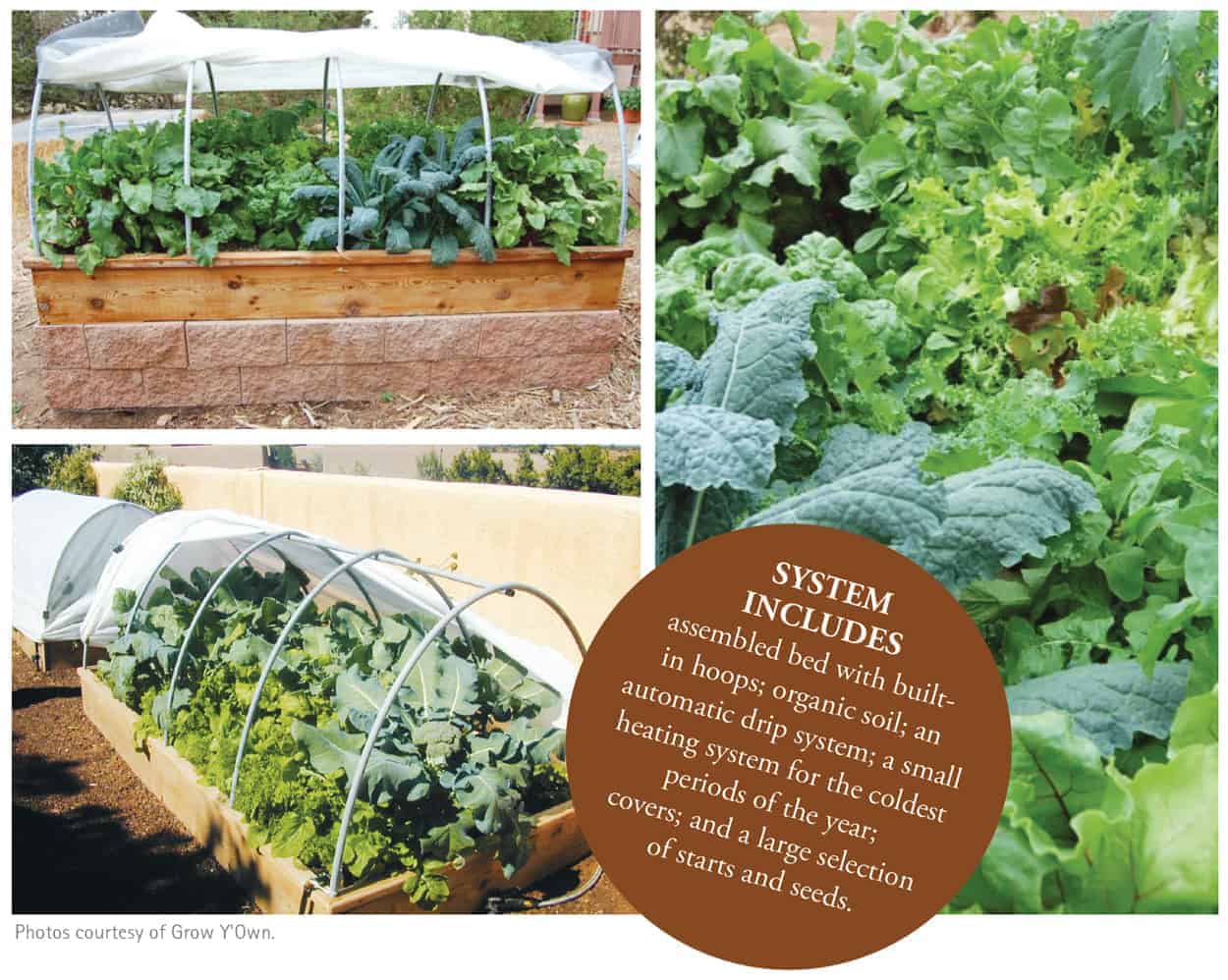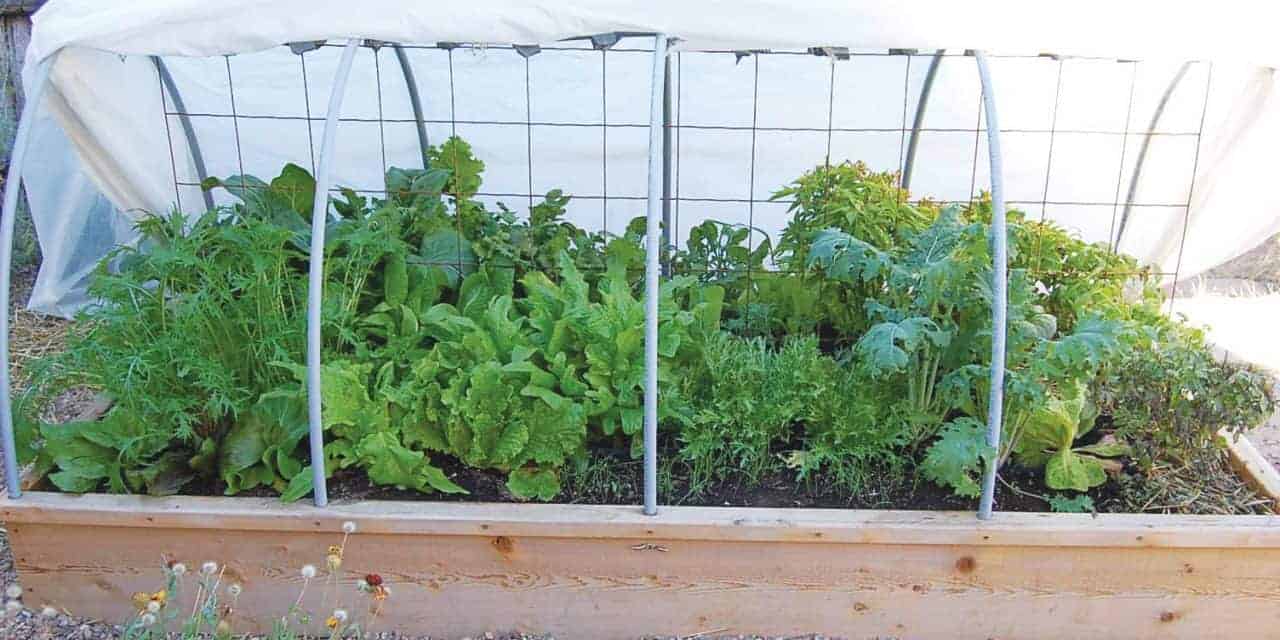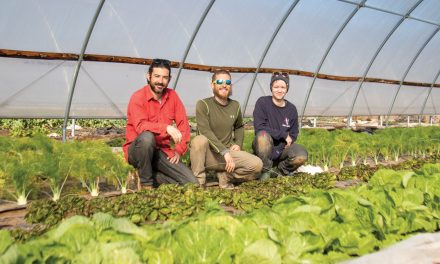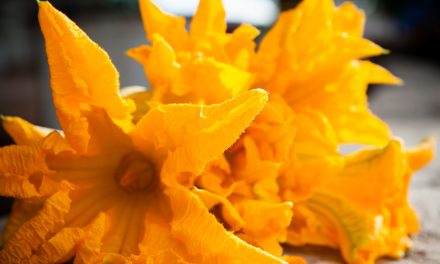Grow Y’Own
by Stephanie Cameron

I have gardened every year since I moved back to New Mexico in 2007—with some successes and some failures—but this was the year I threw my hands up and said no more. After investing hundreds of dollars in plant starts and soil, I got four small Japanese eggplants before the pests demolished every plant in my yard. With everything from tomato worms to weird slug bugs eating my tomatillos, and rabbits and mice munching away every last Sandia chile pepper, every day this summer was a battle. A pastime that I had enjoyed for many years and that had proven very fruitful was coming to a hopeless end. Then I had the good fortune of meeting Ken Kuhne of Grow Y’Own. I shared all my woes with him and he grinned and said his cover technology could take them all away. As he flipped through his book of success stories, my hope slowly resurfaced. “Covers are the key to the success of Grow Y’Own hooped raised beds,” said Kuhne. With his beds, anyone can grow at any elevation, in any temperature, under any condition the elements throw at you.
After thirty-six years of designing and building custom homes, Kuhne decided to build smaller boxes and help the planet cut down on the carbon footprint of shipping food thousands of miles. The inspiration came from Deborah Madison, renowned cookbook author, chef, and multiple-award winner, who suggested Kuhne build grow beds as a way she and others could produce their own crops year round. On the eve of retirement in 2008, Kuhne chose to stay in the game a bit longer to help schools, young mothers with infants, restaurants, shelters, youth centers, the elderly, pueblos, colleges, individuals, and families learn to grow their own organic, healthy, and free food supplies—locally. Now, after ten years, with beds in thirty states and Canada, Grow Y’Own continues to aid and educate.
What is the technology?
Nobody else in the US has a system quite like Grow Y’Own, with summer and winter covers working in tandem during the coldest times of the year. The summer cover is a triple-weight, UV resistant, breathable, polypropylene called N-sulate. It keeps out the region’s harsh, high-altitude UV sun; the abrasive New Mexico winds; and all critters. The winter cover is a heavy-duty, UV resistant, six-millimeter plastic called Flex o’Glass that is used for greenhouse applications. When used over the summer cover in the winter, it creates a double-paned window effect, with the insulation layer below and the waterproof layer on top. Both covers are custom fit to the hooped frames. Kuhne’s beds and covers are built to last. Most of their winter covers have gone eight years without replacement or with only minimal tearing.
What are the materials?
Grow Y’Own raised beds are made out of two-by-twelve-inch, kiln-dried, western red cedar from Cascadia. The kiln-dried process makes them stable in all conditions and more resistant to cracking and warping than products you buy at the big box stores, which are often made out of plastic, not produced locally, and without a cover system.
What can you grow?
In a four-by-four-foot bed, a single person can grow a continuous supply of food—summer and winter. In a typical bed, Kuhne will plant chard, kale, arugula, spinach, lettuces, beets, carrots, radishes, sorrel, leeks, onions, garlic, tomatoes, cukes, peppers, eggplant, herbs, and more. The only thing he won’t plant are corn and artichokes, because of height. Biennials like chard and kale will keep going for two years. Kuhne stays away from broccoli, cauliflower, Brussels sprouts, cabbage, and potatoes; despite growing well in a Grow Y’own system, these vegetables each take up about four feet, and gardeners will want to try to maximize the space available for plants they can harvest multiple times. For crop rotation, he will plant leeks, onions, and garlic in the fall for early spring harvests.
What do you get?
Customers can do as little or as much as they want with a Grow Y’Own bed. Typically, a system will include the assembled bed with built-in hoops; organic soil; an automatic drip system; a small heating system for the coldest periods of the year; a split-faced sand-colored block, if someone desires to have a bed and working space at a higher level; covers; and a large selection of starts and seeds.
Kuhne put in a four-by-four-foot bed for a single woman in Eldorado. After about one month, she called and said, “You didn’t tell me!” He couldn’t imagine what she meant until she said, “What do I do with all this food?” Kuhne told her to share it with her neighbors, and she said, “I did.” Kuhne told her to take some to the Food Depot or shelters and she said, “I did.” Kuhne told her to start drying or canning her surplus and she said, “I did.” A few weeks later, she called and ordered a four-by-eight-foot bed. Kuhne said, “I thought you said you had too much food?” She replied, “I know, but I want to grow more things!”
I left our meeting invigorated and ready to grow again, starting now, in the fall, not in the spring. With Kuhne delivering the bed, soil, irrigation, covers, plant starts, and installing, how could I resist? I hope to share many successful stories with you in the seasons to come.
505-490-1849, www.growyown.com


Update from Stephanie Cameron
Since writing this story in the Fall 2016 issue, I have installed four Grow Y’Own raised beds. Below are just some of the many things I have had success with while growing all four seasons. The possibilities are endless. My growing days, prior to my Grow Y’own beds were limited to tomatoes and basil; but now the variety of produce I am pulling from the ground is endless. It’s never too hot, or too cold to plant. My green thumb is back!

Before – Knarly Carrots

After – Roasted Carrots with Carrot Top Pesto
Edible celebrates New Mexico's food culture, season by season. We believe that knowing where our food comes from is a powerful thing. With our high-quality, aesthetically pleasing and informative publication, we inspire readers to support and celebrate the growers, producers, chefs, beverage and food artisans, and other food professionals in our community.































